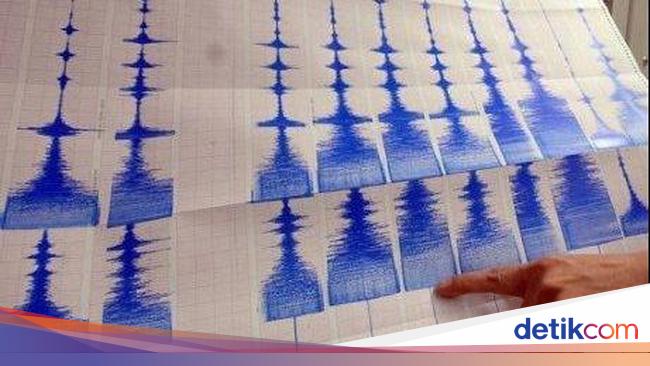Jakarta –
Natural disasters, incl earthquake, is fundamentally unpredictable because it happens beyond our control. However, that doesn’t mean humans give up. We are still trying to overcome natural disasters by continuing to learn from the events that have occurred.
One form of human effort in dealing with natural disasters, especially earthquakes, is with earthquake sensing devices and tsunami sensing devices.
No, speaking of earthquake detection and warning instruments, Japan is undoubtedly the champion of all the countries in the world. Being in an earthquake-prone area, Japan has repeatedly experienced earthquakes. Some of them are also very powerful.
Realizing that technology to alert the public could save hundreds to thousands of lives, researchers at the University of Tokyo’s Earthquake Research Institute (ERI) have devised a new technique that detects subtle gravitational signals traveling just before the occurrence an earthquake.
In the study, published in the scientific journal ‘Earth, Planets and Space’, the researchers found important information among the vast amount of seismic data generated by the 2011 Tohoku earthquake in eastern Japan.
The research was inspired when Professor Shingo Watada read a paper from Italy’s Istituto Nazionale di Fisica Nucleare that suggested that gravimeters, sensors that measure the strength of local gravity, could potentially be used to detect earthquakes.
“This got me thinking that if we have enough seismic and gravitational data about when and where large earthquakes have occurred, we can learn to detect earthquakes with a gravimeter as well as a seismometer. This could be an instrument important for future seismic research,” said Professor Watada quoted by Earth. com.
Earthquake detection process
As seismic waves transmit energy through the Earth, the density of the subsurface material through which they travel becomes denser and develops a slightly greater gravitational pull.
Gravity is generated at the speed of light, which means a sensitive gravimeter can detect these changes in density before seismic waves arrive.
“This is the first time anyone has shown a clear earthquake signal using such a method. Others have investigated the idea, but have not found any reliable signals,” explained one of the ERI graduates, Masaya Kimura.
‘Our approach is unique in that it examines a wider range of active sensors during the 2011 earthquake. And we use a special processing method to isolate the silent gravitational signal from the noisy data,’ he explained.
The researchers used a variety of data collected from seismic instruments located on land and at sea, and collected data from a superconducting gravimeter in central Japan.
The signal analysis performed by the team was so reliable that it received a score known as 7-sigma accuracy, meaning that there is only a one in a trillion chance that the result is wrong.
This will be very useful in calibrating future instruments made specifically for detecting earthquakes. Professor Masaki Ando of the Physics Department of the University of Tokyo has invented a new type of gravimeter, namely the torsion bar antenna (TOBA), which aims to be the first instrument for such sensing purposes.
“SGs and seismometers aren’t ideal because the sensors in them move in unison with the instruments, which nearly cancels out the subtle signals from earthquake,‘ explained ERI’s Professor Nobuki Kame.
“This is known as Einstein’s elevator, or equivalence principle. However, TOBA will solve this problem. This device detects changes in the gravitational gradient despite motion. It was originally designed to detect gravitational waves from the big bang, such as earthquake in space, but our focus is now more entrenched.”
The researchers then envision a network of TOBA instruments distributed throughout the seismically active region. This early warning system is said to be able to warn people 10 seconds before the first seismic wave arrives.
10 seconds may seem tight. However, early detection and warning have a very significant impact in efforts to rescue disaster victims.
Watch a video “M 6.8 Earthquake shakes Enggano Bengkulu!“
[Gambas:Video 20detik]
(rns/rns)


